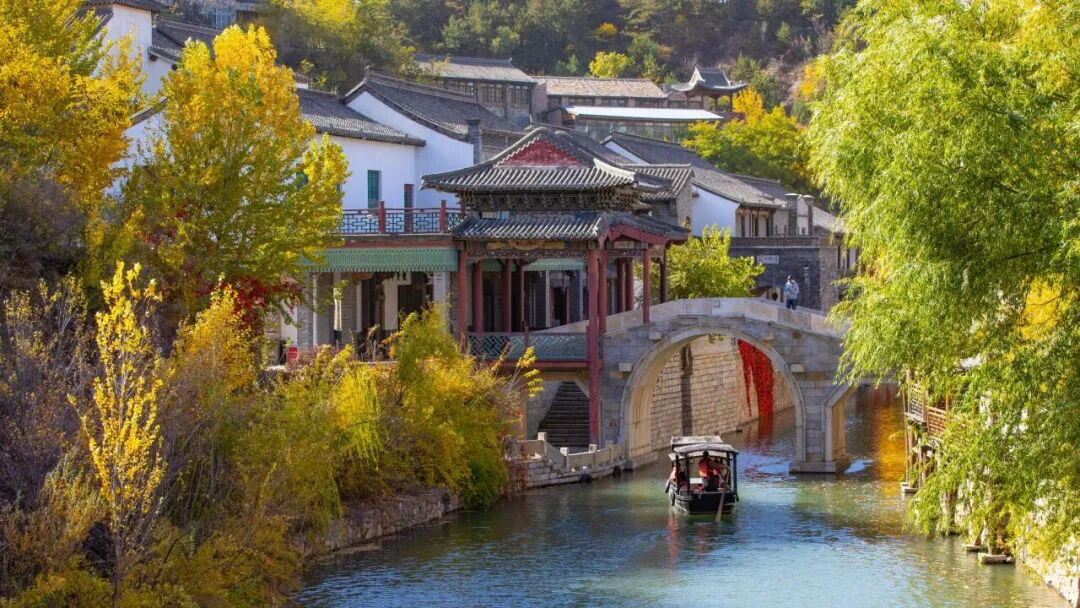Revolutionary martyrs bravely fought for national independence, people's liberation, and social progress, forging the foundation of our current happiness. As Party's Day (July 1) approaches, let us embark on a journey to honor these heroes and ensure that the spirit of the revolution is passed down through generations.
Shayu Anti-Japanese Martyrs Monument

Located in Shayu Village at the foot of the Mutianyu Great Wall, the Shayu Anti-Japanese Monument is among many red historical sites in the area. It commemorates the Shayu Battle, which marked the first shot fired against the Japanese in Beiping, and honors the martyrs who heroically sacrificed their lives. The monument is inscribed with the story of the Eighth Route Army's Fourth Division fighting the Japanese in Shayu in June 1938.
The "First Shot in Pingbei" demonstrated the heroic spirit of the people of Huairou. During the fiercest moments of the battle, villagers from Shayu, Jingyu, and Nanye spontaneously organized to support the Eighth Route Army in their fight against the Japanese invaders. Some villagers guided soldiers, brought them water, and delivered food, while others removed their own doors and used ropes to rescue the wounded from the battlefield amidst a hail of bullets.
Over 70 years have passed, and today, when people drive past the eastern entrance of Shayu, they will see the monument inscribed with "National Heroes Immortal" by Comrade Ma Huizhi, the former Secretary of the Hebei Provincial Committee. Ma Huizhi played a significant role in leading the Eastern Hebei People's Anti-Japanese Uprising and establishing the Jirecha Anti-Japanese Base Area, supporting the Fourth Division of the Eighth Route Army in their guerrilla warfare. The monument stands tall amidst verdant pines and cypresses, exuding a solemn and reverent atmosphere.
Address: Shayu Village East, Bohai Town, Huairou County, Beijing
Pingxi Anti-Japanese War Memorial Hall

The Pingxi Anti-Japanese War Memorial Hall has a building area of 4,350 square meters and an exhibition area of 2,500 square meters. Constructed in 1992 and expanded in August 2005, the memorial hall has become a patriotic education base encompassing the memorial hall, the Pingxi Anti-Japanese Martyrs Cemetery, the Pingxi Unknown Martyrs Cemetery, and the Pingxi Martyrs Cemetery. It is a national key protected site for martyrs' memorial buildings.
The hall's exhibits are organized into seven sections: "The Party's Leadership in the Pingxi Anti-Japanese War," "The Creation and Development of the Pingxi Anti-Japanese Base," "The Atrocities of the Japanese Invaders," and others. More than 3,000 precious historical artifacts, including objects, manuscripts, and photographs, are on display. The exhibition presents the national war situation and the establishment of the Jin-Cha-Ji Anti-Japanese Base from various perspectives and angles.
Pingxi, named for its location west of Beiping, primarily includes the regions of Fangshan, Laishui, Yixian, and Mentougou. It served as an important corridor connecting the enemy-occupied areas with the Jin-Cha-Ji Border Region.
Address: Management Office of Pingxi Anti-Japanese Martyrs Cemetery, Shidu, Fangshan District, Beijing.
Bai Yihua Martyrs Memorial Hall

On the northern shore of the Miyun Reservoir, amidst green trees, stands a majestic marble monument commemorating Bai Yihua, a national hero of the Anti-Japanese War. He was the original commander of the Tenth Infantry Regiment of the Jin-Cha-Ji Eighth Route Army and the founder of the Fengluanmi Anti-Japanese Guerrilla Base. On February 4, 1941, he was tragically killed by a Japanese sniper in the western hills of Maying, Miyun, at the age of 30. Bai Yihua was an outstanding commander, national hero, and a vanguard of the proletariat.
The memorial site covers a total area of 3,000 square meters. At the entrance stands a 6-meter-high stone archway inscribed with "Eternal Glory to Martyr Bai Yihua" on the front and "National Elite" on the back. Inside the park, there is a marble bust of the martyr and a marble screen, which features eight large characters handwritten by General Xiao Ke and the "Biography of Martyr Bai Yihua" written by his old comrade-in-arms, Wang Kang.
In 2006, the Miyun Anti-Japanese Exhibition Hall was completed. It occupies a total area of 1.5 acres (about 6000 square meters), with a building area of 293 square meters. The hall stands 10 meters tall, topped with a design resembling the hat of the Eighth Route Army. The memorial hall is divided into four exhibition areas.
Address: Hebei Village, Shicheng Town, Miyun District, Beijing.
Heroic Mother Deng Yufen Sculpture Theme Square

Located in Zhangjiafen Village, Shicheng Town, Miyun District, Beijing, the "Heroic Mother Deng Yufen" Sculpture Theme Square covers an area of 12.9 acres. This square commemorates Deng Yufen, a heroic mother who sacrificed seven of her relatives to the front lines for the liberation of the Chinese nation and the birth of New China. All seven relatives ultimately died in battle.
The sculpture, designed by the Central Academy of Fine Arts, stands 5 meters tall and is made of granite. It is situated on a pedestal of rocks, symbolizing the firm revolutionary beliefs and indomitable spirit of Heroic Mother Deng Yufen. On the rocks, seven peace doves represent her seven relatives and the revolutionary heroes of the Seventh Battalion.
Heroic Mother Deng Yufen is depicted holding cloth shoes and a needle, with her sleeves tied with cloth, gazing into the distance. This symbolizes a mother sewing clothes for her son with a thread in hand, hoping for the safe return of her loved ones and soldiers.
Address: Zhangjiafen Village, Shicheng Town, Miyun District, Beijing.
Translator: DING Hongwei
Reviewer: BAI Jing



